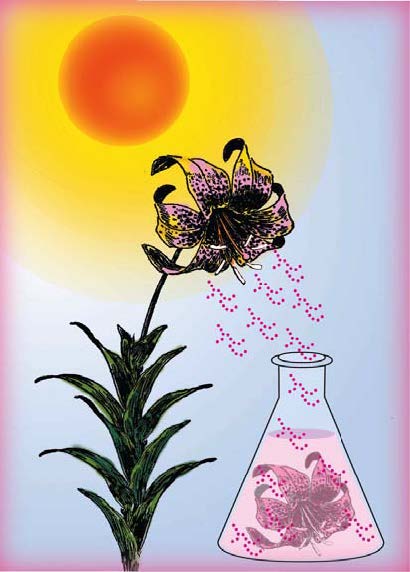left: University of Cincinnati's Anna Gudmundsdottir employed Ohio Supercomputer Center resources to better understand how to tether fragrance molecules to a photoremovable protecting group (A) and release the fragrance molecules by exposure to sunlight (B).
In the past decade, a series of useful molecular systems – known as phototriggers, photoswitches, photocaging groups or photoremovable protecting groups (PRPGs) – have been used in a wide variety of applications, playing a key role in the release of fragrances from household goods, as an aid in multi-step syntheses and in drug and gene delivery.
PRPGs also make it possible for biochemists to release bioactive compounds in living tissue with both high temporal and spatial accuracy, thus making it possible to study physiological events, such as enzyme activity, ion channel permeability and muscle contraction. The choice of PRPG is critical, depending upon the system, and must be tailored to the application.
“We have designed several new PRPGs and studied the mechanism for the photorelease,” said Anna Gudmundsdottir, Ph.D., professor of chemistry at the University of Cincinnati. “The photoremovable protection group acts as a sort of cap, containing the fragrance until the cap is pried off by a photon of light. For this purpose, it is important to design a ‘photoprotection group’ that was somewhat difficult to pry off. For household products, such as a scented cleaning fluid, consumers want fragrance to be released slowly over a long period of time. That requires what is known as a low ‘quantum yield.’ ”
The goal of one of Gudmundsdottir’s latest research projects has been to discover how to selectively form reactive intermediate compounds, such as triplet 1,2-biradicals, and use them to release alcohols from PRPGs, as well as to form triplet vinyl nitrenes, another reactive intermediate compound. While somewhat short-lived, these compounds hold great potential as PRPGs due to their high-energy properties.
She and her research team are leveraging computational resources at the Ohio Supercomputer Center and the electronic structure modeling capabilities of Gaussian and Turbomole software packages to: characterize the intermediates formed upon photolysis of simple vinyl phenyl ketones, determine the mechanism and the rate of photorelease from 4-hydroxyl-4-phenylcrotonate ester derivatives and characterize the intermediates formed from photolysis of vinyl azides.
“The research is both creative and original because it uses a simple sensitization technique to selectively form 1,2-biradicals that can be used to initiate fast photorelease of alcohols and form vinyl nitrene intermediates,” Gudmundsdottir noted. “These studies will result in a better understanding of the reactivity of triplet 1,2-biradicals and vinyl nitrenes. Furthermore, the results will lead to new PRPGs and the elucidation of the mechanism for release from these PRPGs, which will contribute to the advantage of fundamental photochemistry and reactive intermediates.”
--
Project lead: Anna Gudmundsdottir, University of Cincinnati
Research title: Reactivity of 1,2-biradicals and their applications
Funding source: American Chemical Society – Petroleum Research Fund
Web site: www.che.uc.edu/annag/
